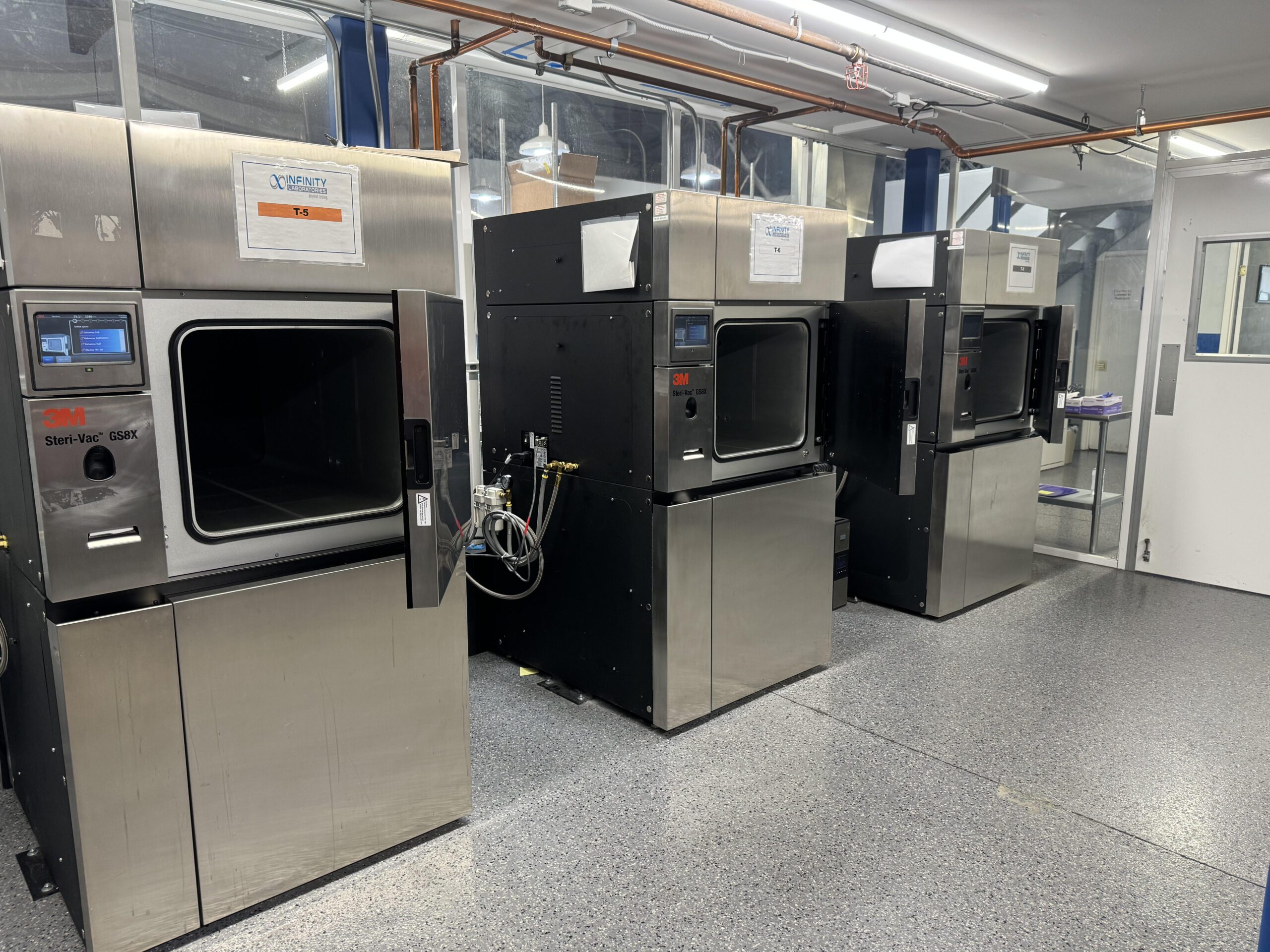Ethylene oxide (EO) sterilization is one of the most widely used methods for sterilizing medical devices, pharmaceuticals, and other healthcare products. Its effectiveness in penetrating a wide range of devices and killing microorganisms, including bacteria, viruses, and fungi, while maintaining the integrity of complex devices makes it a preferred choice for many manufacturers. However, the process of EO sterilization goes beyond just the application of the gas; rigorous testing and validation are essential to ensure that the process is safe and effective. This blog will explore the numerous advantages of EO sterilization.
Broad Spectrum Efficacy of EO Sterilization
Broad Spectrum Efficacy of EO Sterilization
One of the most significant advantages of EO sterilization is its broad-spectrum efficacy. EO gas is effective against a wide range of microorganisms, including bacteria, viruses, fungi, and even bacterial spores, which are among the most resistant forms of life. This broad efficacy ensures that products sterilized with EO are free from harmful microorganisms, making them safe for use in medical and healthcare settings.
EO sterilization testing involves the use of biological indicators (BIs) that contain highly resistant spores and is required to confirm sterilization efficacy. By placing these indicators in the most challenging locations within the product or package, manufacturers can confirm that the EO gas has effectively penetrated all areas, and that the sterilization process has been successful. The ability to validate the broad-spectrum efficacy of EO sterilization through testing is a significant advantage, as it provides confidence in the safety of the sterilized products.
Infinity Laboratories’ full suite of validation services for EO sterilization includes:
- Sterilization process development
- PQ protocol and final report preparation
- Sterilization process validation
- Full validation qualification
- Batch release qualification
- Pre-conditioning qualification
- Aeration qualification
- PCD qualification
- Product validation support
- Validation requirements for changes made to existing sterile products
EO Sterilization is Compatible with a Wide Range of Materials
EO Sterilization is Compatible with a Wide Range of Materials
EO sterilization is highly versatile and compatible with a wide range of materials, including those sensitive to heat and moisture. This makes it particularly suitable for sterilizing complex medical devices that may contain electronic components, plastics, or other heat-sensitive materials. Unlike other sterilization methods, such as steam sterilization, which require high temperatures, EO sterilization can be performed at relatively low temperatures, typically between 37°C and 63°C, minimizing the risk of damaging sensitive materials.
The compatibility of EO sterilization with diverse materials is one of its key advantages, allowing manufacturers to sterilize a wide variety of products without compromising their integrity. Through rigorous EO sterilization testing, manufacturers can ensure the process is effective and non-damaging, providing further product quality assurance.
Effective Penetration of Complex Product Configurations
Effective Penetration of Complex Product Configurations
Medical devices and healthcare products often have complex configurations, such as long lumens, intricate designs, or multiple layers of packaging. These complexities can pose challenges for sterilization, as it is essential to ensure that the sterilizing agent reaches all areas of the product, including those that are difficult to access.
EO sterilization is particularly advantageous in this regard, as EO gas can effectively penetrate complex configurations and packaging materials. This ensures that even the most challenging areas are adequately sterilized. EO sterilization testing is conducted using BIs placed in the most difficult-to-reach locations within the product to validate sterilization procedures. Successful inactivation of these indicators confirms that the EO gas has penetrated all areas, assuring that the entire product has been sterilized effectively.
EO Sterilization Compliance with International Standards
EO Sterilization Compliance with International Standards
EO sterilization is regulated by standards such as ISO 11135 and CFR 820, which provide guidelines for the validation and routine control of EO sterilization processes for medical devices.
EO sterilization testing plays a critical role in achieving and maintaining compliance with these standards. The testing process includes validation studies to ensure that the sterilization process is reliable and effective. By adhering to these rigorous testing protocols, manufacturers can demonstrate compliance with international standards, which is essential for gaining regulatory approval and bringing products to market. All sterilization procedures at Infinity are performed in adherence to ISO 11135 and CFR 820 standards to meet regulatory requirements and ensure products are safe for use.
EO Sterilization Ensures Consistency and Reproducibility
EO Sterilization Ensures Consistency and Reproducibility
Consistency and reproducibility are critical factors in the sterilization of medical devices and healthcare products. Manufacturers must ensure that every batch of products is sterilized to the same high standard, with no variation in the effectiveness of the process. EO sterilization offers the advantage of being a highly controlled process, where key parameters such as gas concentration, temperature, humidity, and exposure time can be precisely controlled and monitored.
Through EO sterilization testing, manufacturers can validate the consistency and reproducibility of the sterilization process. This includes conducting multiple validation runs to ensure the process consistently achieves the required sterility assurance level (SAL). By confirming the reliability of the process through testing, manufacturers can be confident that every product batch is sterilized to the same high standard, reducing the risk of product recalls or failures.
Safe Handling of Temperature Sensitive Products
Safe Handling of Temperature Sensitive Products
Many medical devices and healthcare products are sensitive to high temperatures, making them unsuitable for heat sterilization methods, such as steam sterilization. EO sterilization, which operates at relatively low temperatures, offers a safe alternative for sterilizing temperature-sensitive products without compromising their functionality or integrity.
EO sterilization testing is essential to confirm that the process does not adversely affect the physical or chemical properties of temperature-sensitive products. This may include testing for residual EO gas and its byproducts to ensure that they are within acceptable limits, as well as conducting material compatibility studies to verify that the sterilization process does not cause degradation or damage to the product.
EO Sterilization in Final Packaging
EO Sterilization in Final Packaging
Another key advantage of EO sterilization is its ability to sterilize medical devices, pharmaceuticals, and other healthcare products in their final packaging. This process, known as terminal sterilization, reduces the risk of contamination after sterilization. By allowing products to be sterilized in their final sealed packaging, EO sterilization ensures that the product remains sterile until it is opened for use.
Terminal sterilization is particularly beneficial for products that require a long shelf life or must be transported over long distances.
Conclusion
Conclusion
EO sterilization offers numerous advantages for the sterilization of medical devices, pharmaceuticals, and healthcare products. Its broad-spectrum efficacy, compatibility with a wide range of materials, and effective penetration of complex configurations make it a preferred choice for many manufacturers. However, the effectiveness and safety of the EO sterilization process are only ensured through rigorous testing and validation.
Infinity Laboratories is committed to providing comprehensive EO sterilization services to ensure that products meet the highest safety, efficacy, and regulatory compliance standards.
For more information about our EO sterilization services, visit our website.


